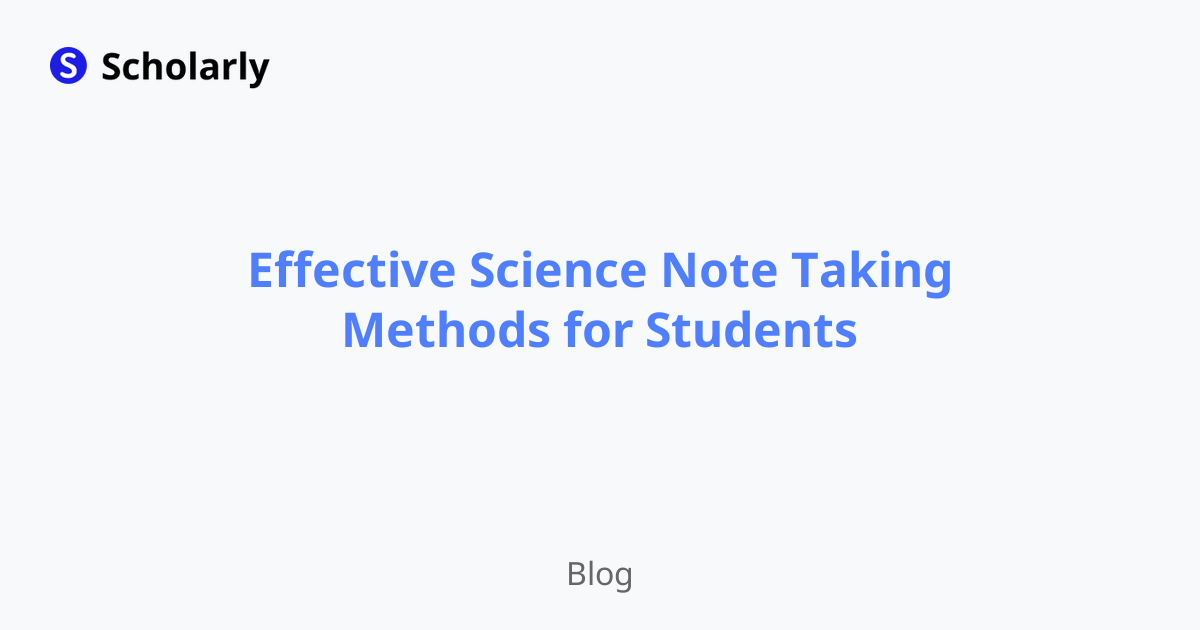Effective Science Note Taking Methods for Students
Discover the most effective science note-taking methods for students that will help improve their understanding and retention of complex scientific concepts.

Introduction
Science is a fascinating subject that encompasses a wide range of complex concepts and theories. To excel in science, students need to develop effective note-taking methods that capture the essential information and aid in their understanding and retention. In this article, we will explore some of the most effective science note-taking methods for students that can enhance their learning experience and performance in science subjects.
Importance of Note Taking in Science
Before diving into specific note-taking methods, it is crucial to understand the importance of note taking in science education. Note taking helps students organize and summarize information, creating a comprehensive study resource that can be referred back to during exams and revision periods. Additionally, note taking promotes active listening and engagement during lectures, leading to better understanding and retention of scientific concepts.
Cornell Method
The Cornell method is a popular note-taking technique used by students across various subjects, including science. It involves dividing the paper into three sections: a narrow left-hand margin, a larger right-hand section, and a smaller section at the bottom.
The left-hand margin is used for writing questions, keywords, or main ideas that can serve as prompts for reviewing the material. The right-hand section is used for taking detailed notes during lectures or reading. The bottom section is reserved for summarizing the main points or key takeaways from the lecture or textbook.
The Cornell method encourages active engagement and provides a structured approach to note taking, making it an effective method for science students.
Mind Mapping
Mind mapping is a visual note-taking technique that can be highly beneficial for science students. It involves creating a diagram or visual representation of concepts, ideas, and their relationships. Mind maps are particularly useful for visual learners and can help in organizing and understanding complex information.
To create a mind map, start with a central idea or concept and branch out with related subtopics. Use colors, symbols, and images to enhance visualization and make connections between different concepts. Mind maps allow for a non-linear organization of information, making it easier to see the big picture and identify key relationships.
Outline Method
The outline method is a straightforward and structured note-taking approach that works well for science subjects. It involves creating an organized hierarchy of main ideas, subtopics, and supporting details.
To use the outline method, start with the main topic or chapter as the heading and list the main ideas underneath using bullet points or numbers. Indent subtopics and supporting details under each main idea. This method provides a clear and logical structure to notes, making it easier to review and study.
Graphic Organizers
Graphic organizers are visual tools that help students organize and connect information. They can be particularly useful for science students who need to grasp complex relationships and processes.
There are various types of graphic organizers that can be used for science note taking, such as Venn diagrams, concept maps, flowcharts, and timelines. Each type of graphic organizer has its own purpose and can be selected based on the specific topic or concept being studied. Graphic organizers can be created by hand or using online tools.
Highlighting and Color Coding
Highlighting and color coding can be effective supplementary note-taking techniques for science students. By using different colors to highlight key points, definitions, examples, or formulas, students can create visual cues that aid in memory retention and retrieval.
Color coding can be used to categorize information based on different topics, subtopics, or levels of importance. For example, using one color for biology-related concepts and another color for chemistry-related concepts.
However, it is important to use highlighting and color coding sparingly and intentionally. Overusing these techniques can lead to information overload and distract from the main ideas.
Conclusion
Developing effective note-taking methods is essential for science students to excel in their studies. The Cornell method, mind mapping, outline method, graphic organizers, and highlighting/color coding are some of the most effective techniques that can enhance understanding, retention, and review of scientific concepts. Experiment with different methods and find the one that suits your learning style and needs. Remember, the goal of note taking is to create a valuable study resource that supports your learning journey and helps you succeed in science.
Try Our Popular AI Study Tools
Transform your study materials into interactive learning experiences with our most popular AI-powered tools:
PDF to Flashcards
Convert lecture notes and textbooks into study flashcards instantly
Text to Flashcards
Turn any text or notes into comprehensive flashcard sets
Image to Flashcards
Convert diagrams and handwritten notes into digital flashcards
YouTube to Flashcards
Generate flashcards from educational video content



